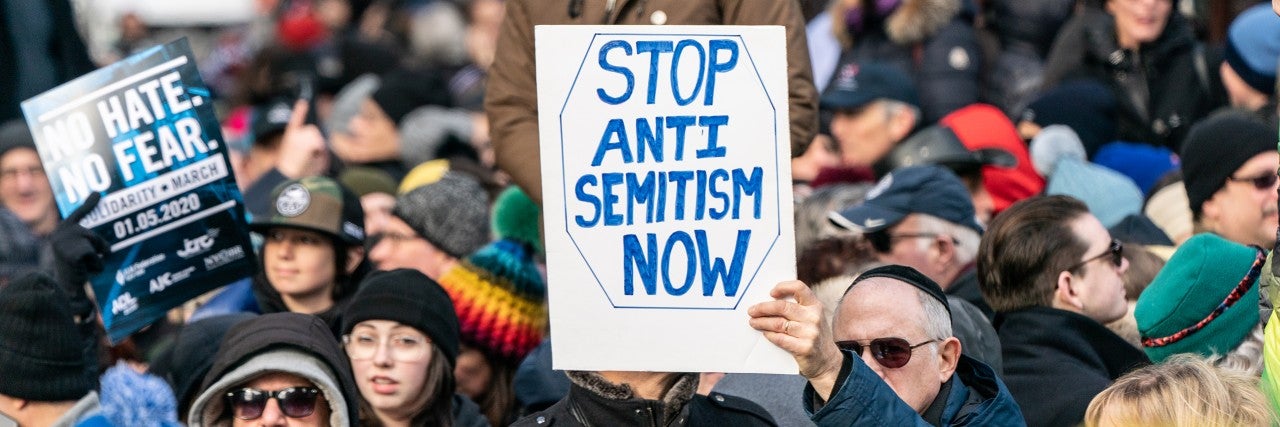March 26, 2021 — New York
This piece originally appeared in the Chicago Tribune.
Lexicographers have a long history of hindsight on the word “antisemitism.”
When James Murray, the original editor of the Oxford English Dictionary, encountered the term in 1881, he dismissed it as a passing vagary. Later, in a letter dated July 5, 1900, to Claude Montefiore, a prominent British Jew, Murray expressed regret for omitting the term. He had considered the term to be a trendy German parlance that had no shelf life in the English language.
“Would that antisemitism had had no more than a fleeting interest!” Murray wrote in the letter unearthed last year by the Israel National Library. “Probably if we had to do that post now, we should have to make antisemite a main word.”
By now, of course, most people know antisemitism has quite a shelf life. Still, efforts to define antisemitism and the tropes that perpetuate it continue to be given insufficient weight.
Case in point, the head-scratching debate in some corners around “The Working Definition of antisemitism,” a non-legally-binding, 38-word synopsis of what constitutes antisemitism, adopted by the International Holocaust Remembrance Alliance in 2016.
Founded in 1998, IHRA is an intergovernmental partnership formed to combat ignorance about the Holocaust and what caused it. The working definition emerged from years of painstaking research around the globe about the rising tide of antisemitism and its roots.
“Antisemitism is a certain perception of Jews, which may be expressed as hatred toward Jews,” the definition states. “Rhetorical and physical manifestations of antisemitism are directed toward Jewish or non-Jewish individuals and/or their property, toward Jewish community institutions and religious facilities.”
Like any useful definition, it includes a wide range of citations and examples, including Holocaust denial or distortion, stereotypes or conspiracy theories about Jews, and denying the Jewish people’s right to self-determination, a key tenet of anti-Zionism.
The definition does not apply to negative assessments of Israel’s policies — many of which are troubling and ripe for denunciation, as are the policies of so many other countries. Rather, it helps unmask antisemitism cleverly disguised as compassionate criticism. It defines the talking points that have stealthily made antisemitism acceptable in mainstream society and hoodwinked some social justice activists into becoming unwitting accomplices.
A sharper, clearer and comprehensive definition is critical when many still have no idea what antisemitism is. According to an American Jewish Committee survey last fall, an astonishing 46% of the American public have either never heard the term antisemitism (21%) or heard the term but are unsure of what it means (25%).
That’s especially scary after the coronavirus pandemic, divisive elections and the national reckoning over racial justice spawned or revived a litany of antisemitic tropes. With that in mind, AJC recently updated “Translate Hate,” a glossary of 40 antisemitic expressions, some of which have existed for millenniums, others invented in the past year.
As a longtime religion reporter, I’d heard some of the terms. Others I’d never encountered, only because I’d never looked. When I did, the glossary brought them into clear focus.
It explains why the terms are antisemitic when used in certain contexts and includes examples of contemporary Jew hatred from the right, left, radical extremists and conspiracy theorists.
For example, as COVID-19 spread in the U.S., the term “Holocough” debuted on white supremacist and neo-Nazi channels as a rallying cry to infect and kill Jews with coronavirus.
The phrase “poisoning the well” reemerged on far-right fringe platforms that blamed Jews for spreading the virus. Far-left platforms replaced the word “Jews” with “Israel” and accused the Jewish state of using the virus to hurt Palestinians or profiting off the vaccine.
Other lies and conspiracies about Jews surfaced within segments of the Black Lives Matter movement, including a false claim condemned by the Council of the American Historical Association that Jews played an outsized role in the Atlantic slave trade.
The “deadly exchange” trope also gained steam — a suggestion that training programs between the U.S. and Israeli police forces have fueled American police brutality against Black Americans by promulgating tactics allegedly used against Palestinians. The gross analogy appeared in demonstrations last summer when protesters chanted “Israel, we know you, you murder children, too.”
And then, there was the election and the so-called steal — a lie orchestrated by followers of the antisemitic and wildly imaginative “QAnon conspiracy. The far-right cybercult recycles stereotypes about Jewish elites who control a “deep state” government and revives medieval blood libel accusations by casting children as victims of a satanic cabal of pedophiles and cannibals. (If you’re not familiar with blood libels, you can look that up too.)
Like any virus, antisemitism mutates, making it next to impossible for lexicographers to keep up and for governments to recognize its many variants. Accordingly, the “Translate Hate” glossary includes the IHRA Working Definition of antisemitism to help flag any new terms or conspiracies that might arise.
A clear understanding of antisemitic lexicon and its history is key to recognizing and fighting the rising hatred of Jews. History has proven that we can’t always count on dictionaries. That’s OK. For the sharpest and clearest picture, antisemitism should be seen in higher definition anyway.
Manya Brachear Pashman is co-host of “People of the Pod,” an American Jewish Committee podcast about global affairs through a Jewish lens. She covered religion for the Chicago Tribune between 2003 and 2018.


